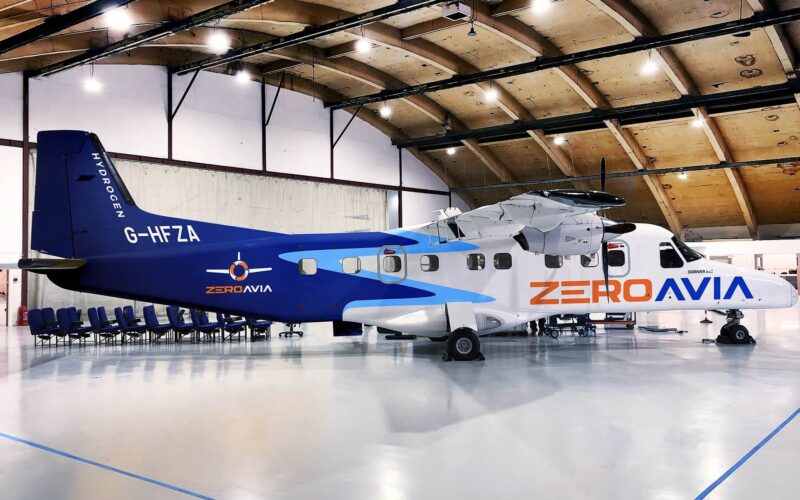British-US company ZeroAvia has signed a deal with a regional turboprop aircraft lessor to fit up to 100 of its zero-emission powertrains onto small aircraft and market them to operators.
The zero-emissions aircraft developer said that MONTE Aircraft Leasing will purchase up to 100 ZA600 powertrains to be installed on existing and new Cessna Caravan, DHC-6 Twin Otter, Dornier 228 and HAL-228 aircraft.
The aim is for the aircraft to be retrofitted with the propulsion systems starting in 2024. In addition, the partners will provide and finance maintenance and hydrogen availability services to help operators run the flights.
“Together, ZeroAvia and MONTE will provide a compelling proposition to operators of 5-20 seat aircraft,” explained James Peck, VP Business Development at ZeroAvia in a press release on June 8, 2022. “This partnership will offer flexibility to operators to allow them to launch zero-emissions flights on their networks, as well as extending the lifespan of hundreds of in-service airframes.”
ZeroAvia has previously announced details to build hydrogen fuel refuelers at its site in California and a hydrogen airport pipeline in the UK, part of efforts to move forward the infrastructure and refueling capabilities needed for zero-emission operations.
ZeroAvia’s ZA600 powertrain is a 600kW system that uses gaseous hydrogen stored onboard in lightweight tanks. The hydrogen feeds fuel cell stacks that generate power by converting hydrogen into electricity.
ZeroAvia has previously detailed plans to operate a 19-seater aircraft on a flight between the UK and Netherlands by 2024. It plans to flight test the ZA600 powertrain, which is targeting a 300-mile range in five-20 seat aircraft, in a Dornier 228 “soon”, initially on one engine, keeping the other as a conventional engine, before moving to full hydrogen-electric flight.
After the initial step, ZeroAvia hopes to provide a powertrain that will give up to a 1000-mile range in 40-80 seat aircraft by 2026.

